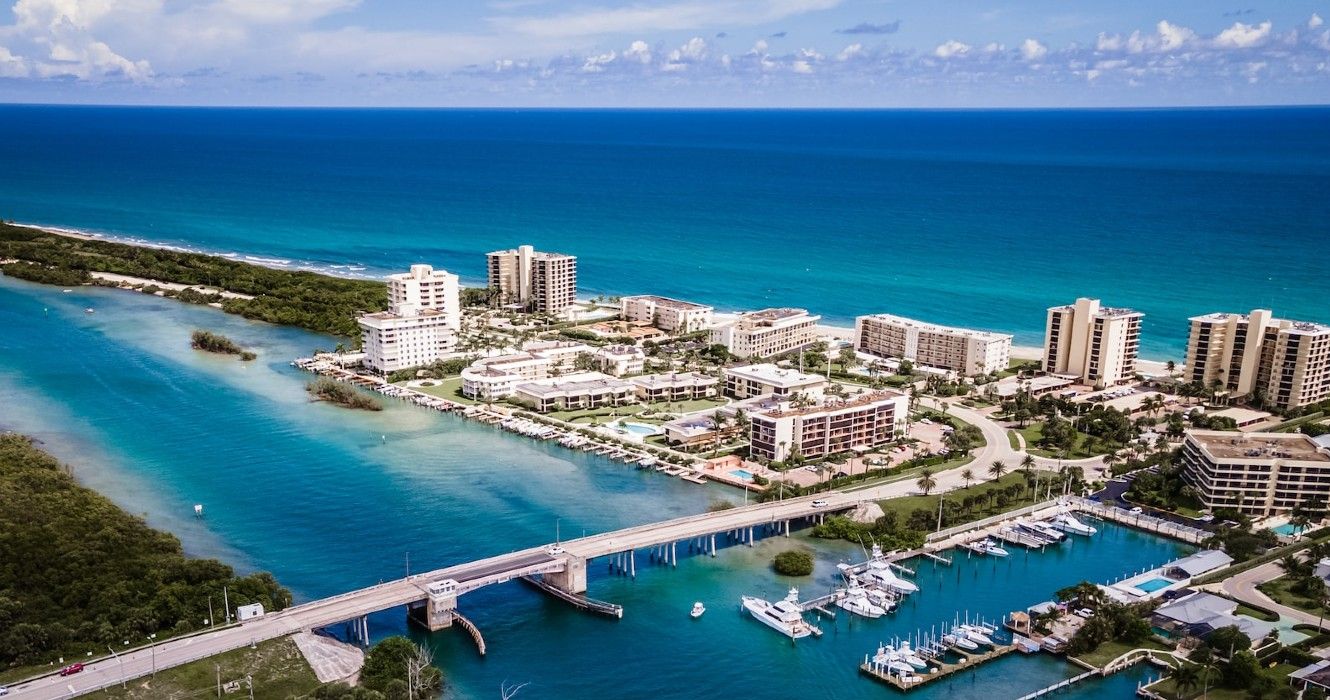Quick Links
Florida is home to many sights that showcase magnificent natural beauty. The Sunshine State is full of superb marvels and different landscapes just waiting for travelers to discover, from white sand beaches to enigmatic caverns. Throughout Florida, from the Panhandle to the Florida Keys, tourists may explore some of the state's most magnificent natural features. If they ask a native Floridian, they will be told that one of the best things about the state is the amazing diversity of species and breathtaking scenery that can be found in its state parks.
Florida has a lot of natural beauty, which offers many chances for exploration and enjoyment. There are more than 160 state parks in Florida, each offering a special range of activities and services. The state parks and nature parks are ideal for a weekend getaway. Blowing Hole Natural Rocks is one of the most astonishing reserves in the state. Therefore, tourists should not miss visiting it while in Florida. Here is the best time to visit it.
Overview Of The Mesmerizing Blowing Hole Natural Rocks
Blowing Rocks Preserve stands apart in an area with miles of sandy beaches because its rocky limestone shoreline appears to belong in Maine or Hawaii.
The preserve on Jupiter Island, which is owned and managed by the Nature Conservancy, is the most untamed and undeveloped beach there is. Tourists cannot even carry food or drinks into the conservancy.
The water springs out of holes in the Anastasia limestone during stormy seas at high tide, occasionally shooting 50 feet (15.2 meters) into the air, giving the area its name. Winter is when these ailments are most prevalent.
Each time tourists go to Blowing Rocks Preserve, it is a unique and breathtaking experience. Sand can once be heaped so high during a storm that the rocks barely peeked over.
On a different occasion, they may see the low tide and descend behind the cliff-like rock formations to explore the little sea tunnels that the waves had cut out. On another trip, they can contemplate effervescent waves crashing onto the granite formations at Blowing Rocks.
Numerous little tidal pools can be adorned with jewel-like shells and barnacles, and the water can have an amazing turquoise color. This rock, known as coquina in Florida, has been used as a construction material for 400 years. It is made up of shells, ridges of sand, and remnants of old coral reefs.
Although it appears in various locations along the coast, Blowing Rocks Preserve has the largest protrusion. To see the entire mile-long (1.6 km) Blowing Rock beach, tourists need to venture both south and north from the dune crossover.
The rock formations range in texture from smooth and wave-worn to jagged and spiky. In the southern portion of the preserve, the boulders have been eroded into forms barely higher than the sand, creating bowl-shaped holes and swirling masses.
Beyond Blowing Rock's southern border, the beach is surrounded by residences, although it is still public land below the mean high tide line, allowing tourists to carry on with their beachcombing. The formations get smaller and beach fishermen are actively casting if visitors wander north of Blowing Rocks.
Best Time To Visit Blowing Rocks
Tourists must plan their visit accordingly if they want to view the Blowing Rocks at their best. The optimum times to travel are on days with a strong breeze and near high tide. They might not notice them spew water even then. It will provide tourists with the finest opportunity.
To see the rocks in action, skip making the journey during low tide. Stormy waters also provide the best opportunity to view the rocks.
Enjoy Doing Different Activities To See Different Aspects Of Blowing Rocks Preserve
Hike Mesmerizing Trails
Five quick hiking paths and picturesque hikes are available in the preserve, including:
Beach Trail that leads tourists through a covered maritime hammock environment to the main stairway to the beach is the primary beach access. There are seats and an observation deck on the stairs.
- Distance: 0.1 mi (0.16 km)
Dune Trail leads tourists up the beach dune and provides them with panoramic views of the coastline. It ends at the sandy northern part of Blowing Rocks Beach.
- Distance: 0.4 mi (0.64 km)
Lagoon Route starts off as a sandy walkway along the magnificent Indian River Lagoon beachfront before looping through saline marsh and coastal strand habitat.
- Distance: 0.4 mi (0.64 km)
Additionally, tourists can enjoy walking a loop through a native pollinator habitat of grasses, shrubs, and blooming plants as a part of the scenic walk through the pollinator garden.
- Distance: 0.1 mi (0.16 km)
Finally, they can stroll on the Mangrove Boardwalk which is a raised boardwalk with an accessible ramp across a mangrove forest with a view of the mesmerizing Indian River Lagoon.
Enjoy Water Activities (Carefully)
Swimming and snorkeling are available to guests at Blowing Rocks Preserve. Exercise caution, however; there is no lifeguard on duty at the beach.

